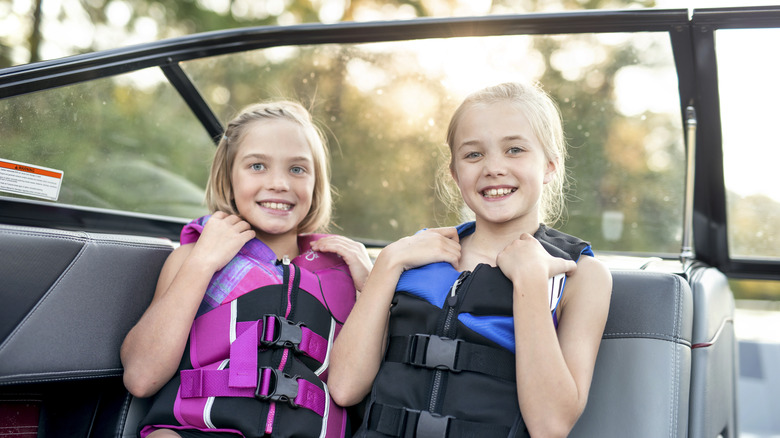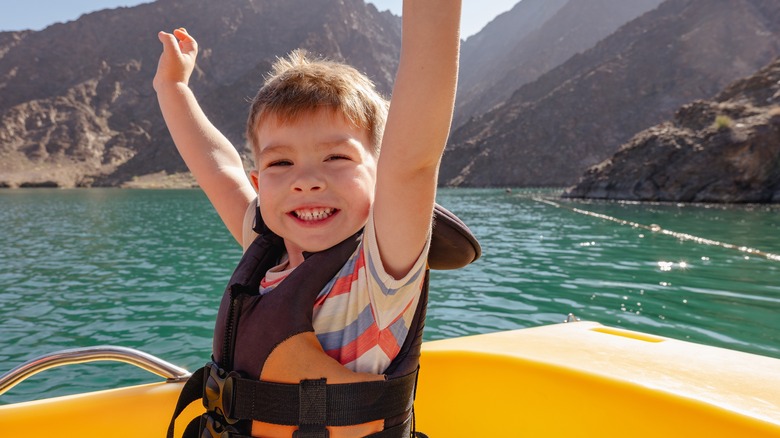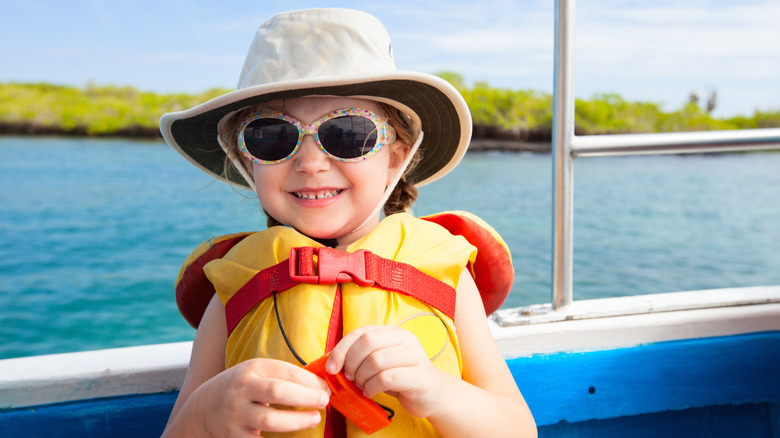Kids' Life Jackets: How To Select The Right One To Keep Your Children Safe
Recreational boating has long been a favorite outdoor activity among Americans, particularly during the warm weather months. Whether it be for fishing, water sports, sightseeing, or day cruising, Americans love spending time on the water. According to the NMMA, recent years have only seen the popularity of boating grow — to the point that an average of 100 million people go boating each year in U.S. waters. Among those boarding boats for a day on the water are families with children of all ages.
The goal for everyone is to have a fun and safe experience while boating, it unfortunately doesn't always end that way. However, the U.S. Coast Guard boating accident statistics show that while the number of boaters is going up, the number of boating injuries and fatalities has actually begun to dip. One of the primary reasons for the lowering of deaths from boat accidents is the use of life jackets. Given that almost 90 percent of boating-related drowning victims were not wearing a life jacket, those numbers could be far lower. Having Coast Guard-approved life jackets gives you and your family the best odds to survive if a boat capsizes, your kayak flips over, or if someone goes overboard. But, how do you choose the Coast Guard-approved life jacket that's perfect for kids on a boat?
What you need to know about kids' life jackets
Life jackets are not just pieces of life saving equipment every boater should have, they are actually required by the USCG. To satisfy Coast Guard requirements, every recreational boat must carry one Coast Guard-approved life jacket for every passenger on board. Simply having the proper number of jackets on board, however, may not be enough to satisfy the USCG requirements, as all jackets also must be in good condition and must be the correct size for the person wearing it. Additionally, it should be the proper type of jacket for the user's activities.
The Coast Guard advises that adult size life jackets do not work for everyone -– including small children. However, child-size life jackets are available in a variety of sizes. It is also important to make sure the life jacket is US Coast Guard approved. Some swim aids and flotation devices appear adequate but are not actually USCG approved life jackets. Finally, life jackets are rated for various activities. Type I vests have the most buoyancy and are designed to turn an unconscious person face up in the water. Type II is a little less buoyant and may not be designed to turn someone face up. A Type III life jacket is intended to help a conscious person stay afloat. Type I is rated for all types of waters, whereas Types II and III are intended for calmer, inland waters.
How to choose the right life jacket for your kids
With that information in mind, it is critical to choose the right life jacket for your kids. First is choosing the proper size and fit. The USCG sizing chart is: Adult — over 88 pounds; Youth — 55 to 88 pounds; Child — 33 to 55 pounds; Infant — under 33 pounds. The style can also affect the fit, which must be snug enough to lift the child from under the shoulder without slipping up over the child's chin or ears.
Comfort is also a consideration. Requirements can vary from state to state, but federal law requires children under 13 to wear a life jacket any time the boat is moving –- under power or not. Boaters should check their state's child life jacket requirements, as some states have even more restrictive measures. In any event, the child will be wearing it a lot, so comfort is important. It is even more important, though, to not sacrifice safety for comfort. It is also imperative to choose the right type of life jacket as well. If paddling or at anchor in calm water, a Type III is plenty. However, if boating in open, rougher water, you may want to consider a Type I or II. Since a day on the water often involves multiple activities, some boaters have their children wear the more restrictive, yet more buoyant versions underway, then switch to the more comfortable models when at anchor.


